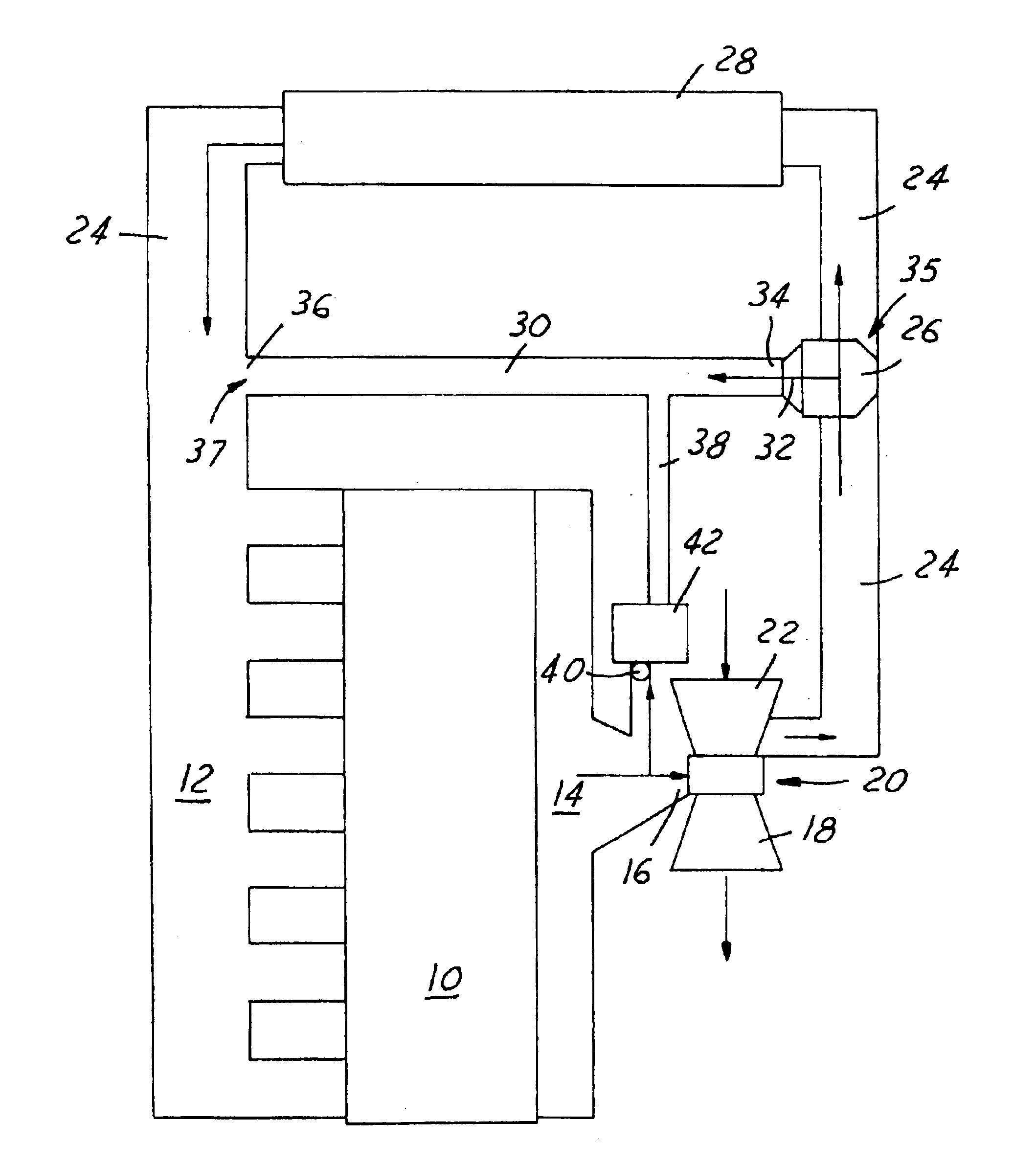Charged air intake system for an internal combustion engine
a technology of internal combustion engine and air intake system, which is applied in the direction of electric ignition installation, machines/engines, mechanical equipment, etc., can solve the problems of corroding sulfuric acid in the intake system, and excessive heating of intake air, etc., to achieve the effect of increasing the density of air flowing
- Summary
- Abstract
- Description
- Claims
- Application Information
AI Technical Summary
Benefits of technology
Problems solved by technology
Method used
Image
Examples
Embodiment Construction
Referring now to FIG. 1, a diesel engine 10 has a conventional intake manifold 12 and exhaust manifold 14. The exhaust manifold has a pipe section 16 leading to a turbo charger exhaust impeller section 18 of turbocharger 20. An intake impeller section 22 is driven and charges fresh air into intake duct 24.
Intake duct 24 has a proportioning valve 26 mounted therein and a charge air cooler 28 downstream of the valve 26. Valve 26 has a second outlet 32 leading to a second or bypass duct 30. In other words, bypass duct 30 has it upstream end 34 in communication with duct 24 upstream of charge air cooler 2B. In addition, bypass duct 30 has its downstream end 36 connecting with first duct 24 downstream of charge air cooler 28 leading to the intake manifold 12. These upstream and downstream junctions are labeled 35 and 37.
The exhaust manifold also has an EGR valve 40 leading to an EGR cooler 42 which leads to EGR duct 38. Duct 38 is connected to bypass duct 30 for delivery the EGR gasses t...
PUM
 Login to View More
Login to View More Abstract
Description
Claims
Application Information
 Login to View More
Login to View More - R&D
- Intellectual Property
- Life Sciences
- Materials
- Tech Scout
- Unparalleled Data Quality
- Higher Quality Content
- 60% Fewer Hallucinations
Browse by: Latest US Patents, China's latest patents, Technical Efficacy Thesaurus, Application Domain, Technology Topic, Popular Technical Reports.
© 2025 PatSnap. All rights reserved.Legal|Privacy policy|Modern Slavery Act Transparency Statement|Sitemap|About US| Contact US: help@patsnap.com


